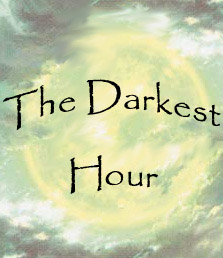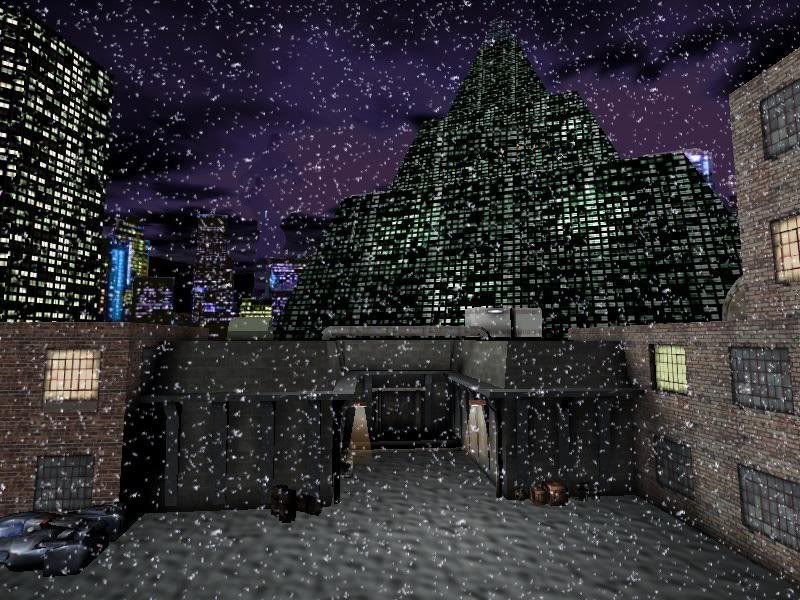
KyotoDistrictKyoto District
This part of the City is a study in contrasts. It is the only place in the City where tradition does not battle advancement. Rather the migrant people of this district embrace change, and manage to create a community where old and new exist in harmony. It is a place where you will find old //machiya// style townhouse faces, topped by skyscrapers clawing into the sky. The skyline consists of as many Magitech illuminators as there are paper lanterns, as many angled modern roofs, as there are pagoda-style temples and high-rises. Of all the districts, it somehow makes the most efficient use of its space, while creating beautiful open areas dedicated to carefully manicured nature -- such as the reflecting pool beside the Golden Pavilion. Kyoto District itself is divided into several "Wards", and one must bear in mind that these parts of Kyoto extend vertically, including rooftop gardens and businesses. A ward does not simply exist between streets A and streets B, it also exists on floors above street level. There are a handful of these Wards, and each one has its own character. Fishimi-ku ("//Sake// town") :: The Inari Shrine, a structure entirely of wood and rice paper is perhaps the best known attraction here. It sits on top of twenty story tower, and is often visited. In this district is a very exclusive //sake// distillery, using the water from a natural spring discovered therein by the earliest migrants. The spring was annexed by Benedict for their use. As one might expect, the district is famous for its tea-rooms and bars. By coincidence, it is also the heart of Martial Arts traditions, and is home to the most Dojos in Kyoto, though a Dojo can pop up nearly anywhere. [Underbelly:: Opium Dens] Higashiyama-ku ("Geishaville") :: The old entertainment ward. Once it was home to reputable Noh theaters and Kabuki houses, as well as many other forms of imported entertainment. It has since given way to rabu hoteru (love hotels) and less reputable offerings. It is also a favorite place for the wealthy and noble to house their mistresses in any one of the various high-rises with their secretly interconnected rooms. [Underbelly :: High rent Brothels] Sakyo-ku ("Little Nippon") :: Downtown Kyoto, if you will, is the business and high-end living ward of the District. If it is expensive it is here. If it is traditional, it is here. This is where craftsman still practice the ancient ways, and Clans still value noble samurai blood above all others. It is here that the Governor's Blackcoats purchase their katanas, from a swordsmith and metallurgist that is so meticulous, he only has the time to produce blades for the Governor's force. It is also the same place one can find Magitech artificers of every stripe, design and make available, much of it custom work for the wealthy throughout Amber. [Underbelly :: illegal weapons and technology trafficking. //Yakuza//-Brotherhood of the Golden Sword.] Shimogyo-ku ("The Arcology") :: Topped by the fantastic Kyoto Tower, this ward is an experiment in high Magitechnology, with Kyoto's distinctive flavor of old and new. It is a roughly pyramidal construction whose base covers a single square mile, and rises into several levels of living and working quarters, with greenhouse areas and sun rooms that nearly render the building self-sufficient. If there is a poor part of the district, it is inside and around The Arcology, where families of four or more, dwell in a single room; some even running small businesses out of their small apartments. Thousands of people live in the Arcology, and it is said that if every one of them left, all of Kyoto's traffic problems, foot and conveyance, would leave with them. [Underbelly :: all manner of crime, most of it Yakuza backed.]  The skyline of Kyoto is a mix of lines and pagodas, fantastically large illuminators selling everything under the sun; all alongside wooden signs, calligraphy in black in, lit by dim candles and script of gold backlit by Magitech lights. The skyscrapers are interconnected by flying bridges and arches, most of them purpose-built, but some of them lain in place by the citizens looking for relief from the traffic below. With one of the densest populations in the city, Little Kyoto is, in a word, CROWDED. The Golden Pavillion is a very old fashion Temple and Shinto Shrine that seems to have been built before anything else. It is not considered part of any of the wards, and is especially considered to be protected by the Governor, who is seen there with his Blackcoats. It sits near a maintained pond, surrounded by carefully manicured greenery. It should be noted that while it is generally prohibited to bear arms in any part of the City, save for those that acquire the proper dispensation, Kyoto's streets are home to more blades and small arms than any other district of the City. Duels of honor are also considered illegal, but the old ways still live among segments of the migrant population, and there have been plenty of bodies found dead from wounds delivered by a katana, beheaded, or in some cases, falling on one's own sword. Finally, there is a final feature of Kyoto that must be mentioned. It is the one place in the district that ignores all social stratification and laws, and manages to be distinctly Kyoto in flavor. It is simply called the Kyoto Market or The Market, by most of the citizens of the City of Amber, and to the locals from the District, it is called the Hanzo Market. It is named for the legendary figure Hattori Hanzo, who commanded the Shogun's ninja of their native land. The ninja protected the great Shogun by hiding in plain sight; they served as his gardeners, his retainers, his servants, even his lovers. The Market sells and trades in everything, even illegal goods, but it all happens in plain sight, alongside legal trade, woven into the fabric of the market like off-white threads in a white sheet, it is there, but it is terribly difficult to track and find them. It is notorious throughout the City, and it is said that if one cannot find it at the Kyoto Market, it can't be found. This press of storefronts, stalls, carts and people happens in the shadow of the Arcology, lit twenty-four hours a day by the Magitech wash of light of the pyramidal structure and hundreds of paper lanterns. ThariGo = a mixture of Thari and the primary migrant language of the district |